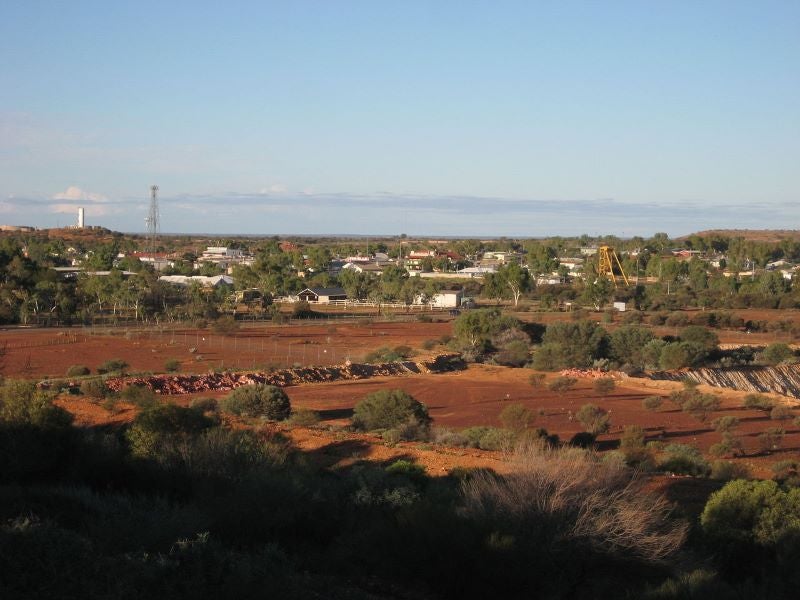The Gabanintha vanadium project, a proposed open-pit mining development in Western Australia is expected to be one of the biggest primary vanadium producers in the world.
Technology Metals Australia (TMT) has been the 100% owner and developer of the property after acquiring Kop Ventures in 2016. It completed a definitive feasibility study (DFS) for the project in August 2019.
The DFS predicted annual production of up to 7.9 million pounds (Mlb) of vanadium pentoxide (V2O5) processing up to 2.3 million tonnes per annum (Mtpa) of run-of-the-mine (ROM) ore over an estimated mine life of 16 years.
The pre-production capital expenditure on the process plant for the Gabanintha vanadium project is estimated to be approximately £260m ($318m).
The Western Australian Government’s Department of Mines, Industry Regulation and Safety granted mining leases for the Gabanintha vanadium project, as well as for the nearby Australian Vanadium project being developed by AVL, in August 2020.
Project location and geology
The Gabanintha vanadium project is located approximately 40km south-east of the town of Meekatharra in the mid-west region of Western Australia.
The Gabanintha vanadium deposit is located in the north Murchison granite-greenstone terrain of the Archean Yilgarn Craton. The ore body is hosted within the mafic, ultramafic, extrusive, and the volcaniclastic rocks of the Gabanintha formation.
Mineralisation and reserves
The mineralisation at Gabanintha occurs in a layered gabbro along a strike length of 5.5km in a northwest-southeast trending layered mafic igneous unit with a distinct magnetic signature.
The Gabanintha vanadium project was estimated to hold 29.6 million tonnes (Mt) of proven and probable ore reserves grading 0.88% V2O5 as of July 2019.
The measured indicated, and inferred resources were estimated to approximately 131Mt grading 0.9% V2O5.
Mining method
The Gabanintha vanadium project will be a conventional open-cut mine involving conventional truck and shovel operations.
The project envisages mining at two open-pits namely the North Pit and the South Pit. The minimum mining width at both the pits will be 25m while the minimum width of the staged cutbacks will be 30m.
The North and the Central pits are designed to reach an ultimate depth of 180m and 190m, respectively. Access to the full pit depth will be via footwall ramps.
Ore processing at Gabanintha
The processing plant for the Gabanintha vanadium project will be designed to produce approximately 13,000 tonnes (t) of vanadium pentoxide flake a year.
The ROM ore will undergo three stages of crushing to reduce the ore size to an 80% passing size of 8mm. The crushed ore will then be passed on to a ball mill to further reduce the size to 0.25mm.
The finely ground ore will be introduced to a wet magnetic separation circuit to remove finely liberated gangue from the vanadium bearing magnetite. The non-vanadium bearing waste is transferred to the tailings thickener and stored in a wet tailings pond.
The vanadium-bearing magnetite concentrate will be mixed with a sodium-based salt and passed on to a roasting kiln for roasting at 1,200°C to convert the vanadium pentoxide into sodium metavanadate which is soluble in water.
The roasted material will undergo leaching with water and the obtained sodium metavanadate will undergo re-precipitation to produce ammonium metavanadate.
The ammonium metavanadate will be passed on to a de-ammoniation circuit to remove ammonia from the precipitated product and to produce the vanadium pentoxide powder.
This powder is further melted in a furnace and cooled down to produce the final vanadium pentoxide flake product.
Vanadium off-take
Technology Metals Australia signed a memorandum of understanding (MoU) to annually supply 2000t of vanadium product to China’s CNMC Ningxia Orient Group Company (CNMNC) for a period of six years, in May 2019.
It also signed another MOU with Big Pawer Electrical Technology Xiangyang for a binding off-take agreement for up to 5,000t of vanadium pentoxide a year, in May 2020.
Infrastructure facilities
The site will be accessible along a 2km section of the existing Nannine-Polelle Road which branches from the nearby dual-lane, unsealed Meekatharra Sandstone Road.
The project is proposed to receive approximately 19MW of electricity from a standalone gas power station.
Gas supply is expected to be received via a gas pipeline connecting the Dampier Bunbury gas pipeline of the Australian Gas Infrastructure Group (AGIG).
The project is estimated to require up to three gigalitres (Gl) of water per annum which will be sourced from 12 production bores from a paleochannel located to the north-west of the processing facility.
The on-site workforce is expected to be accommodated north of the processing facility in a self-contained accommodation village. The construction of a 400-man accommodation village utilising pre-owned accommodation is also being considered for the project execution.
Contractors involved
Wave International prepared the definitive feasibility study (DFS) report, while CSA Global, supported by Mine Geotech, provided the resource estimates and the mine design for the project.
METS Engineering was engaged for the metallurgical test work, product assessment, and mineral processing services.
AQ2 served as the consultant for project water supply and pit dewatering, while Hydrologia conducted surface water assessment studies.
FLSmidth, a Danish multinational engineering company, was contracted to supply the key roasting kiln section for the Gabanintha vanadium processing plant in June 2020. FLSmidth also undertook the pilot-scale kiln roast testwork as part of the DFS of the project.





